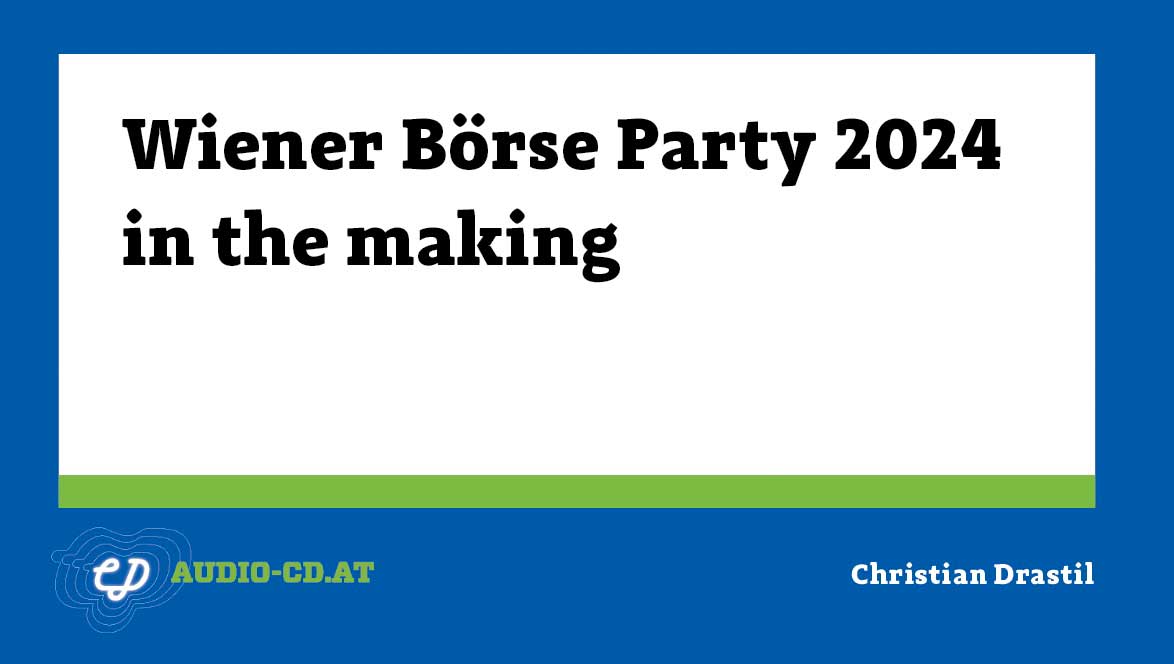Faktencheck: Migration und Arbeitsmarkt (Martin Ertl)
09 Jul

Sozioökonomische Eigenschaften von Migranten werden in der Öffentlichkeit verzerrt wahrgenommen. Deutlich über 60 % der Netto-Zuwanderung nach Österreich stammt aus der Europäischen Union, mit zunehmender Bedeutung Osteuropas. Die Mehrheit der nach Österreich kommenden Migranten hat eine gute Aussicht auf eine erfolgreiche Arbeitsmarktintegration. Dennoch existieren deutliche Lohnunterschiede. Staatsangehörige aus den neuen EU-Mitgliedsstaaten verdienen im Schnitt um rund ein Drittel weniger als Österreicher. In der Bevölkerung ist die Wahrnehmung über die Anzahl und sozioökonomischen Eigenschaften von Migranten oft stark verzerrt. Viele überschätzen die Höhe der Zuwanderung stark. Zum Beispiel liegt der Anteil von Migrant... » Weiterlesen
ECB Forum on Central Banking: Price and wage-setting in advanced economies (Martin...
25 Jun

Presentations and discussions hoover around the “Phillips curve”, the pivotal concept justifying the existence of central banks. Draghi stresses that wages are finally rising and the Phillips curve is strengthening. The Phillips curve is “alive and well but needs to be found” as measurement errors have likely overshadowed inflation signals. Nowadays, Phillips curves contain inflation expectations which should be influenced more directly in breaking the “veil of inattention”. The ECB Forum on Central Banking is a big, high-profile get-together of economic researchers and central banker from around the world. Last week in Sintra, Portugal, the main topic was price and wage-setting in advanced economies. In the opening remarks, ECB President Draghi commente... » Weiterlesen
The divergence of two central banks: Fed and ECB outline paths of monetary policy ...
18 Jun

The Federal Reserve Bank (Fed) increases key interest rates and signals a faster rate hiking cycle. The European Central Bank (ECB) adjusts its forward guidance on interest rates expecting rates to remain at their present levels at least through the summer of 2019. The ECB’s net asset purchases (QE) will end this year after a reduction of net asset purchases to 15 billion EUR per month from October onwards. The Euro Area continues to show lower potential growth and an unemployment rate still above the natural rate of unemployment. Last week was dominated by long-awaited central bank decisions on monetary policy normalization. The members of the Federal Open Market Committee (FOMC) of the Federal Reserve Bank (Fed) met on June 12-13 to discuss the stance of monetary policy consistent wi... » Weiterlesen
Eurozone growth and ECB preview (Martin Ertl)
12 Jun

Eurozone growth slowdown in early 2018 is driven by declining export growth. Growth remains strong in Spain and Austria while decelerating in Germany, France and Italy. Higher energy prices cause a spike in Eurozone inflation at 1.9 % in May. ECB’s Praet gave a lecture on interest rates and some signals about the upcoming ECB meeting for the attentive reader. Economic growth in the Eurozone decelerated in Q1 2018. Last week’s release of the final GDP figures by Eurostat shows seasonally adjusted quarter-on-quarter (sa, q q) real GDP growth of 0.4 % in the first quarter of 2018 after five consecutive quarters of 0.7 % quarter-on-quarter growth. Compared to the first quarter of 2017 (year-on-year), the Eurozone economy expanded by 2.5 % (y y). Thus, economic growth in the Eurozone ... » Weiterlesen
Italy: Public debt sustainability (Martin Ertl)
05 Jun

Italy’s debt sustains a large interest rate shock as long as the budget is kept under control. Debt sustainability depends on fiscal discipline and continued primary fiscal surpluses. Public debt is predominantly held by residents; primarily by financial institutions and the central bank. In 2017, Italy’s government debt reached 131.5 % of GDP which is one of the highest values in the Euro Area. We perform a debt sustainability analysis (DSA), that is, simplified though insightful, based on the formula [pic5,left,200] where Dtis the debt to GDP ratio, rtis the average annual nominal interest rate paid on government debt, gtis the nominal GDP growth rate and PBtis the primary general government balance in year t [1]. If we assume for a moment that the primary budget (fiscal reven... » Weiterlesen
 31.07.24
31.07.24
global market. 7 Monate 2024 sind vorbei und die Wiener Börse hat in diesen sieben Monaten mehr Handelsvolumina verbuchen können als in den ersten 7 Monaten 2023, der Zuwachs ist im einstelligen Prozentbereich, aber immerhin. Auch im früher stark promoteten global market ist es erstmals seit Jahren wieder etwas nach oben gegangen, im Gesamtjahr 2021 lag dort das Jahresvolumen noch bei 5,5 Mrd. (das ist ca. ein Monatsumsatz im Prime Market), 2022 waren es nur noch 1,3 Mrd.. und 2023 gab es sogar den Fall unter die Mrd. Euro. In den ersten sieben Monaten 2024 ist es wieder leicht nach oben gegangen, ob die Mrd. End of Year wieder erreicht werden kann, ist aber unklar. Es gibt zwar im global market günstige Konditionen, aber die Broker stellen Wien bei den internationalen Aktien nicht so in die Pole Position und die Markttiefe könnte natürlich ebenfalls besser sein. Keine einfache Aufgabe, diese wichtigste Aktienfacette im Vienna MTF, denn es geht immerhin um die wichtigsten Aktien der Welt. Ich bin ja der Meinung, dass das Tagesgeschäft viel mehr promotet gehört, davon würde auch der global market profitieren.
 17.07.24
17.07.24




